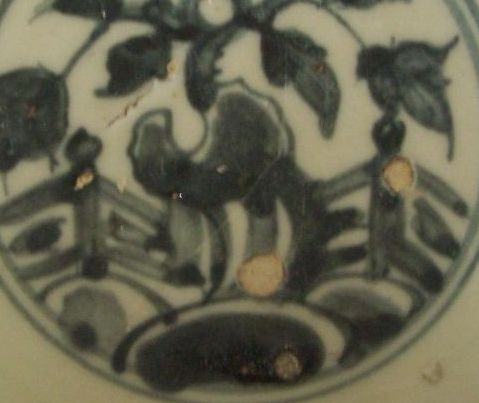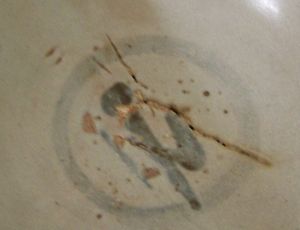Firing
Faults
in
Ancient Chinese Porcelain
Just What Are Kiln Firing Faults?
Firing faults often but not exclusively refers to glaze problems that developed in the kiln.
Especially if someone is relatively new to collecting Chinese
porcelain, or if your experience is limited to European antique
porcelain, you may never have seen any.
Firing faults seem to be rare in Western porcelain as kiln
firing techniques probably were already well developed when
porcelain production started in Europe. That is likely because European porcelain production did
not really take off until the end of the 18th century, when Kaolin
clay was discovered in Europe and its reliance on imports from China
decreased drastically.
Actually, the Chinese kilns of that time also were able to produce
fine porcelain with almost no faults as the kiln firing
techniques had matured at the time.
|
|
Firing-related problems seem to have been more frequent
during the Song, Yuan and Ming dynasties, but low-quality
products of the late Qing dynasty (1644-1911) and republic
period also frequently show firing faults.
 |
Firing faults on a Zheng De (Ming dynasty)
dish. |
 |
Bottom of a Ming bowl. This bottom cracked during the firing
process and the crack is quite wide, going through to the
other side. As it apparently was in use it must have been
filled, but the filling has now all but disappeared. |
During the Qing dynasty (1644-1911) such faults were gradually
reduced essentially to glaze contractions.
Other problems related to kiln firing were glaze cracks or
hairlines that developed during the cooling process after
firing.
As the ceramic body and glaze are cooling at a different rate,
tensions develop between ceramic body and glaze during the cooling in the kiln, which can lead to
a crack or hairline (a very fine split line) in the glaze.
Another cause are glaze contractions which find there cause in the
pre-firing processing. If some oily or fatty substance
adheres to the ceramic body, at the time when the glaze is applied, the
glaze may covers this but the glaze does not adhere to the
clay.
As soon as the kiln temperature rises above a certain
temperature such adhering substance(s) evaporate or burn and, if their
is not enough glaze to cover the area in such areas a little
hole may result.
Tiny spots may sometimes have been filled by the glaze partially or
in full, but sometimes it just didn't happen. As a result the
unglazed body may show in some older antique Chinese
porcelain, or a glaze indent shows.
Ceramic bodies of Ming dynasty ceramics often have cracks in the bottom as the one shown in the picture above, or have
larger areas that are not covered by decoration and glaze. As like in the case above these
items apparently were used despite of this, they must have been mended with some low-fired clay. Porcelain was a valuable commodity in those times.


